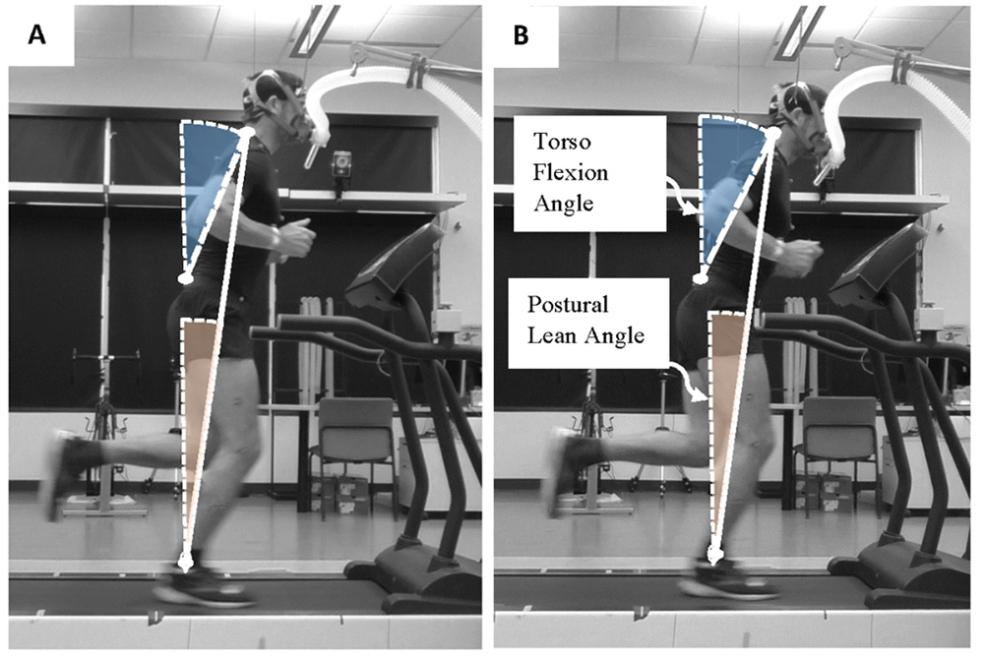
The study looked at recreational runners who ran with different levels of forward lean, from a nearly upright posture to a maximum forward lean of 8 degrees. The researchers found that runners who used a moderate forward lean (50% of maximum) experienced better running efficiency than when they ran with a maximum forward lean.
In fact, runners using a moderate forward lean, similar to that typically preferred by most runners, were 8 percent more efficient than when they ran with a maximal forward lean.
“Often runners are told to practice leaning forward to improve running efficiency. The premise is that gravity will help to propel the body forward and require less energy and force from leg muscles. However, it wasn't clear how forward postural lean affected the metabolic cost of running. We found that when asked to run with their maximum forward lean, recreational runners had a significantly greater metabolic cost than when they ran with a moderate forward lean or nearly upright posture. In fact, running with maximum forward lean increases the energy cost of running in a way that is similar to adding weight to your lower legs,” says Justus Ortega, Kinesiology professor at Cal Poly Humboldt and co-director of Cal Poly Humboldt Biomechanics Lab.
Metabolic cost is the amount of energy needed to move. High metabolic cost contributes to making running more difficult and tiring.
In the study, researchers looked at self-reported recreational runners between the ages of 18-35 years—who ran at least 30 minutes a day, three times a week.
Participants were asked to run on a treadmill at a speed of 8 miles per hour using three levels of forward postural lean (upright, maximum lean, and 50% of maximum lean) as researchers measured their oxygen consumption and carbon dioxide production and then calculated the metabolic rates of each runner.
Overall, runners were 7-9 % less efficient when running with their maximum forward lean than when running with a moderate lean or running upright.
However, researchers aren’t sure why running with a moderate lean is more efficient than running with a large forward lean, but they believe it may have something to do with the hip muscles. Muscle activation data also collected in their study suggests that the gluteus maximus muscle, a muscle responsible for extending the hip, is more active when running with a large forward lean and likely requires more energy consumption.
“The bottom line is that the technique of running with a moderate forward is better than trying to run with large forward lean, at least in terms of efficiency,” said Nina Carson, a Physical therapist and Doctoral student at the University of Colorado, Denver, and lead author of the paper.
Future studies are planning to examine how different levels of forward lean influence running efficiency and performance when running on incline and decline slopes.